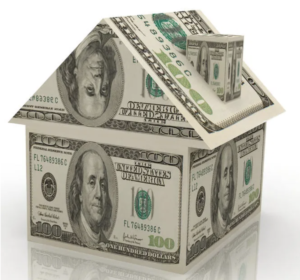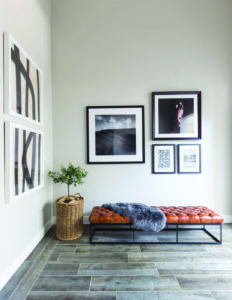 What could parachute pants, the mullet hairstyle and white Capezio shoes have in common with multi-family residences? These were popular fashion statements during the 1980s, the last time occupancy rates for this housing sector were as high as they are now.
What could parachute pants, the mullet hairstyle and white Capezio shoes have in common with multi-family residences? These were popular fashion statements during the 1980s, the last time occupancy rates for this housing sector were as high as they are now.
“In late 2020, many economists forecasted very conservative growth numbers for 2021 within the strides of a global pandemic,” noted Dan Butterfield, vice president, residential sales, Dal-Tile. “Residential single- and multi-family segments outperformed such forecasts even with significant supply chain chaos.”
Other industry observers attested to the performance of the U.S. multi-family sector in 2021. “Last year was a record year for the multi-family industry with absorption of more than 600,000 units nationally and an average of 14%-plus effective rent growth,” said Brian Caress, CEO of Redi Carpet, one of the largest multi-family flooring providers in the country with 33 branches serving 25 states.
The opening of the U.S. economy following the COVID-19 outbreak and improving market conditions contributed to a rebound in multi-family housing starts. Other factors, including geographic migration, low interest rates and easy access to funding, are also contributing to the strength of the multi-family market.
“From Redi Carpet’s perspective, a healthy multi-family industry creates opportunities for our continued growth,” Caress said. He cited statistics supplied by the National Apartment Association and the National Multi-family Housing Council that showed there will be a need for more than 4.5 million new apartment units by 2030. On top of that, the groups estimate that more than 11 million older apartment units will require renovations during the same period.
In short, many of the drivers that led to 2021 being a banner year will positively impact the multi-family sector this year. “In 2022, many households are expected to move away from cities,” said Sarah Martin, senior economist at Dodge Data & Analytics. “Additionally, with mortgage rates inching up and home prices soaring, many first-time homebuyers could decide to purchase lower-priced condos rather than single-family homes. This could drive higher demand for lower-rise buildings and townhouses.”
The multi-family sector is a mixed bag, spanning everything from apartments and condos to senior-living spaces, student housing and factory-built homes. For example, according to the National Association of Home Builders, (NAHB), five-plus unit production in the multi-family sector is up measurably, while two- to four-unit production rose only slightly. Multi-family building permits increased 5.2% to an annualized pace of 609,000 units in November, the most recent period for which stats are available. Looking at regional permit data on a year-to-year basis, permits are 13.6% higher in the Northeast; 16.3% up in the Midwest; 19.3% higher in the South; and 22.4% up in the West.
“The multi-family, high-rise apartment and condominium market continues to be very active in the Pacific Northwest,” noted Randy Rubenstein, owner, Rubenstein’s Contract Carpets, a Seattle-based flooring contractor and Starnet member. “A good deal of continued interest from offshore capital investors is fueling this mini-boom.”
Other key metrics show confidence in the market continuing to improve. For example, the Multi-family Occupancy Index (MOI), which measures the industry’s perception of occupancies in existing apartments, increased by five points to 75 in November, the highest reading since the index debuted in 2003. “The record-level MOI is consistent with the strong multi-family occupancy rates, which are higher than they’ve been since the 1980s,” NAHB economist, Fan-Yu Kuo, said.
Unit size is also growing. NAHB reported the percentage of homes with four or more bed-rooms and three or more bath-rooms rose 45% and 32%, respectively, and closer to 2015 peaks. “We expect size to increase as multi-family build-ing moves farther out from urban cores as renters seek larger, more affordable housing due to the virus crisis,” noted Robert Dietz, SVP and chief economist, NAHB.
Generational demographics play a role in reshaping the housing market as well, industry watchers say. As baby boomers continue aging, demand for senior housing is expected to escalate. Meanwhile, millennials are reportedly not forming house-holds at the same pace as previous generations. “Millennials and the oldest members of Generation Z are the most likely to be renters but have also suffered the largest share of job losses since the recession,” Dodge’s Martin said. “As jobs are regained, conditions for this cohort will steadily improve.”
Mitigating factors
 While overall business demand is robust, the outlook is not all rosy. Multi-family owners and developers are still recovering from the impacts of eviction moratoriums, construction shutdowns and overall weak market fundamentals in 2020. In addition, developers are wrestling with significant supply-side challenges such as finding enough labor, materials and land to build on. “Supply chain challenges and raw material inflation continue as well as the limited availability of skilled labor,” said Brent Flaharty, SVP and chief customer experience officer, Armstrong Flooring.
While overall business demand is robust, the outlook is not all rosy. Multi-family owners and developers are still recovering from the impacts of eviction moratoriums, construction shutdowns and overall weak market fundamentals in 2020. In addition, developers are wrestling with significant supply-side challenges such as finding enough labor, materials and land to build on. “Supply chain challenges and raw material inflation continue as well as the limited availability of skilled labor,” said Brent Flaharty, SVP and chief customer experience officer, Armstrong Flooring.
According to NAHB stats, high lumber costs over the summer added roughly $30,000 to the price of an average new single-family home and $10,000 per apartment. Despite significant declines in lumber and plywood prices in recent months, pricing and availability of other building materials remain a challenge. “Overall, building material prices have increased 12.2% year to date,” NAHB’s Kuo said. “Although builder sentiment improved in October due to strong consumer demand, builders are getting increasingly concerned about affordability hurdles ahead for most buyers.” If that isn’t bad enough, delays of imported materials are creating a ripple effect throughout the supply chain. For instance, global logistics concerns tied to import uncertainty was a factor behind Dal-Tile’s shifting focus around North American-made product solutions.
Others attest to the impact. “These pressures have forced many builders to focus on stateside manufacturing and distribution,” Larry Browder, EVP of sales, Crossville, pointed out. “The increased demand for stateside production has pushed manufacturing to look at narrowing lines and larger production runs.”
Market conditions remain challenging for suppliers as well. “Factors driving the challenges
include disruptions in supply chains, inflationary pressures and labor availability,”
said Jay Smith, VP of sales, builder and multi-family at Shaw Industries. “It is likely
these challenges will persist into 2022, but we’re optimistic that business will remain
solid.”
The construction labor shortage is not unique to multifamily builders, but its impact is
felt throughout the industry. “Specifically, supply chain delays that push delivery way
out beyond normal lead times,” Rubenstein noted. “These include delays in components to
the manufacturing process as well as related freight delays, both domestic and offshore.”
These are issues that impact virtually all parties across the supply chain. “Everyone I talk
to seems to have the same issues,” Redi Carpet’s Caress said. “While much of this may
have begun due to COVID-19, it’s been exacerbated by an increase in demand. On the
positive side, if you have product in the warehouse and the labor to get it installed, there is
plenty of work out there.”
Flooring trends

When it comes to flooring, the industry is witnessing trends in buyer preferences similar to the single-family new home construction and residential remodeling sectors. Carpet remains a strong option, observers say, although market share is dwindling due to the growing popularity of hard surfaces. “We have seen a continued shift for better hard surface products,” said Todd Hershauer, director, multi-family, builder and SFR, Mannington Mills.
Hard surfaces continue to gain momentum, industry members say, led by luxury vinyl tile. Meanwhile, ceramic tile, hardwood and laminate flooring all continue carving a niche in certain areas of the home. “Our ceramic tile line for builders has been extremely well received,” Shaw’s Smith said. “And we’re looking to grow that segment with leading designs and on-trend formats.”
More than anything, consumer shopping budgets will affect flooring sales in these categories. “Strained budgets shouldn’t necessarily affect the amount of flooring in a home or property,” said Michael Mulligan, VP, resident sales, Tarkett Home. “These budget challenges will more than likely affect the type of product used in those spaces. This may also push management companies to pivot from LVT to sheet while others may choose to increase the amount of carpet to minimize increases to renters.”

